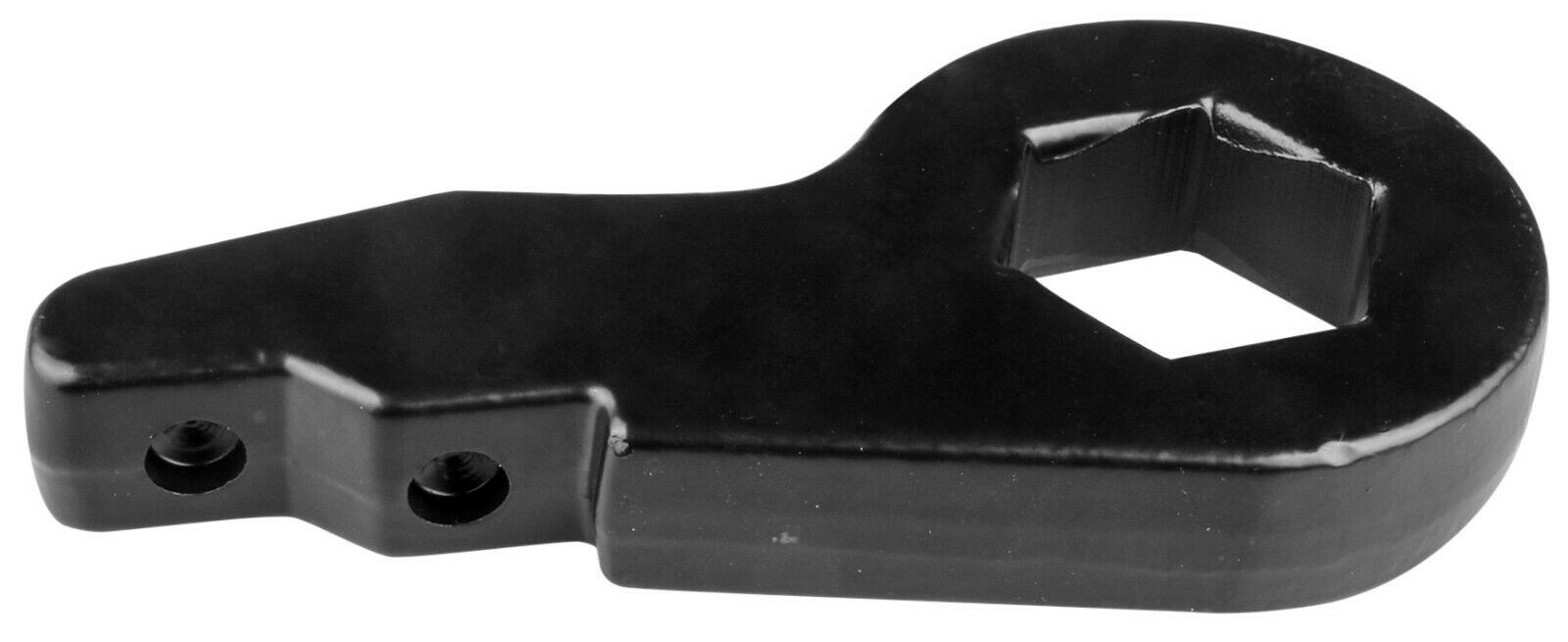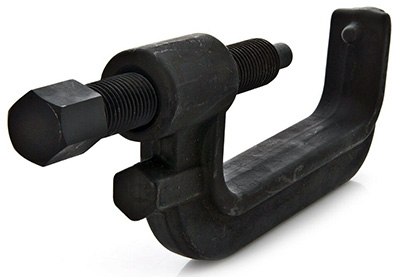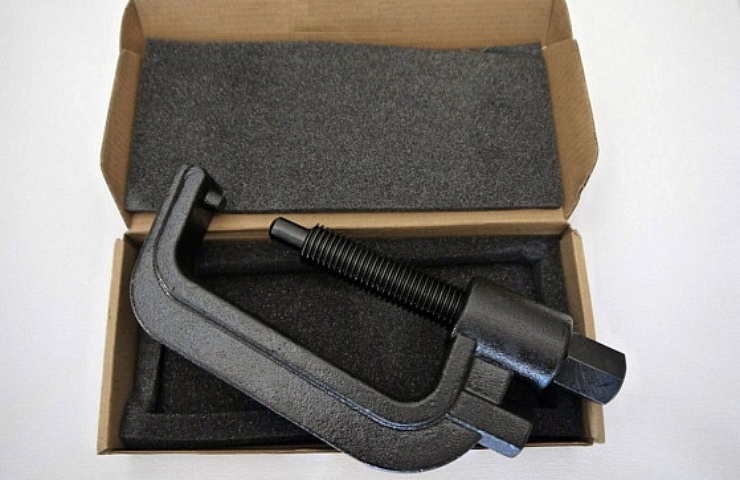
This diagram shows how a torsion bar bolt is used to raise the suspension.
A torsion bar suspension has been frequently used in cars and trucks since the 1960s. They are cheap, sturdy, and effective. And they eliminate the need for coilover suspension parts and pieces. But how do torsion bars work?
Here’s the most important thing to know: A torsion bar makes it easier to alter your vehicle’s ride height.
What’s the Key?

A torsion bar twists to help absorb bumps as your wheels move up and down
A torsion bar relies on the suspension piece connecting the wheel to a cross member. That’s what creates strength and stability. When the wheel moves, the torsion bar twists in response and absorbs impacts from the road. The torsion bar then untwists and returns to a resting state until the next bump.
By the way, what does “torsion” mean? It’s twisting action, especially of one end of an object relative to the other.
Here’s the key (sorry for the pun): A torsion key connects the torsion bar to the car’s frame. The torsion key typically has a bolt to raise or lower the ride height. Car owners can adjust most stock torsion keys as much as two inches without any safety concerns.

A torsion key has a spot for a bolt that makes height adjustments.
Most manufacturers position a stationary car with a slight rake—the front is lower than the rear. As the vehicle takes on weight and moves, it levels out. If you move the bolt to the maximum height adjustment, the suspension rises up—although the ride feel may become harsher.
Using a Torsion Bar Key
To adjust a torsion key, start by measuring the existing ride height and decide how much you want to raise or lower the vehicle. Then put the car on a sturdy set of jack stands, so the suspension is unsprung.
Safety first: You’ll probably be under the car and tugging on the frame. Use a sturdy jack!
Now follow these steps starting on one side of the vehicle:
- Spray the torsion key bolt with penetrating oil.
- Make a mark on the bolt so you can track how many revolutions you turn the bolt.
- Start slowly and try about four complete revolutions of the bolt.
- Take the car off the jack stands and see how much the ride height changed.
- Make additional turns to the bolt until you are happy with the height.
Then make a similar change in the bolt for the other side of the vehicle. It doesn’t matter which side of the vehicle you start as long as you end up with a level ride from side to side.
Crank Up the Torsion

You will need a torsion bar unloading tool to swap torsion keys.
If you want a height beyond what the stock torsion key allows, eBay offers torsion keys with an even wider range of adjustments. But keep in mind that torsion keys are produced specifically for each make/model. So your eBay search should include your make/model, ensuring that you’re buying the right torsion key for your vehicle.
You will also need a torsion bar unloading tool to remove the stock key. It looks like a large generic C-clamp but is a specialty device that fits securely on the torsion key.
Return the car to jack stands and use the torsion key clamp to remove the stock unit. Then substitute the aftermarket torsion key. Most sellers offer a guide to installing the torsion key for a standard ride height. From there, you can make the desired minor adjustments.
Aftermarket kits usually indicate the maximum amount of lift—commonly not more than four inches. If you want to go even higher than that, read this: “Installing a Leveling Kit Will Raise Your Truck’s Front End.”
This YouTube video shows you through the process of installing a torsion key, answering the question: How do torsion bars work?





